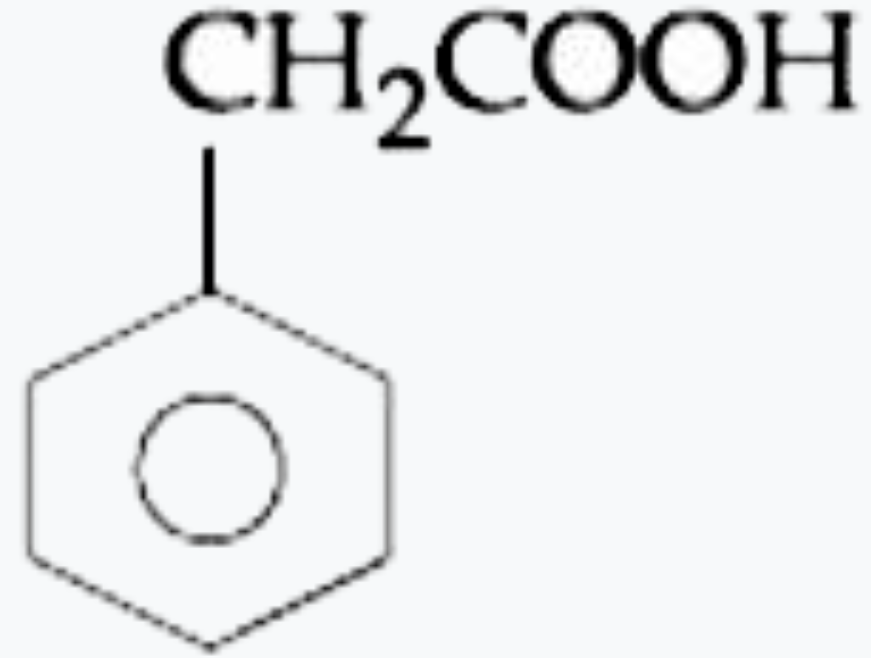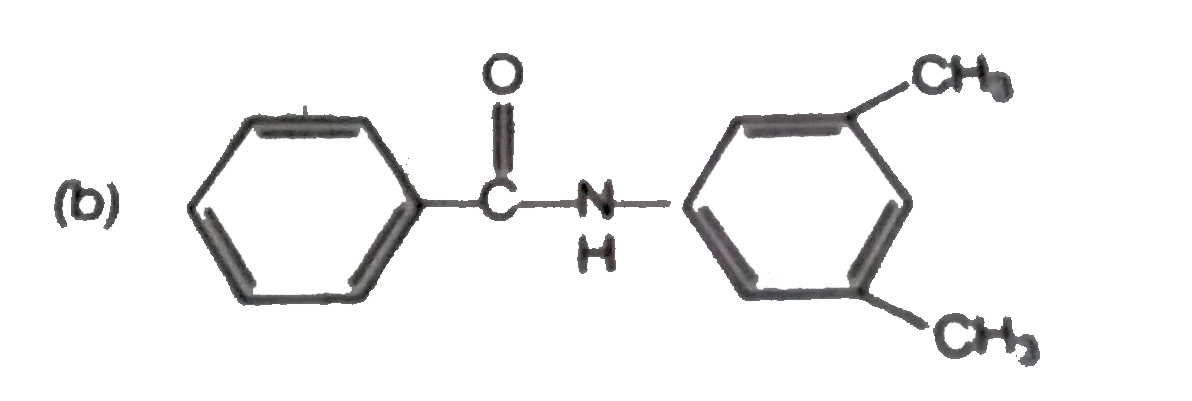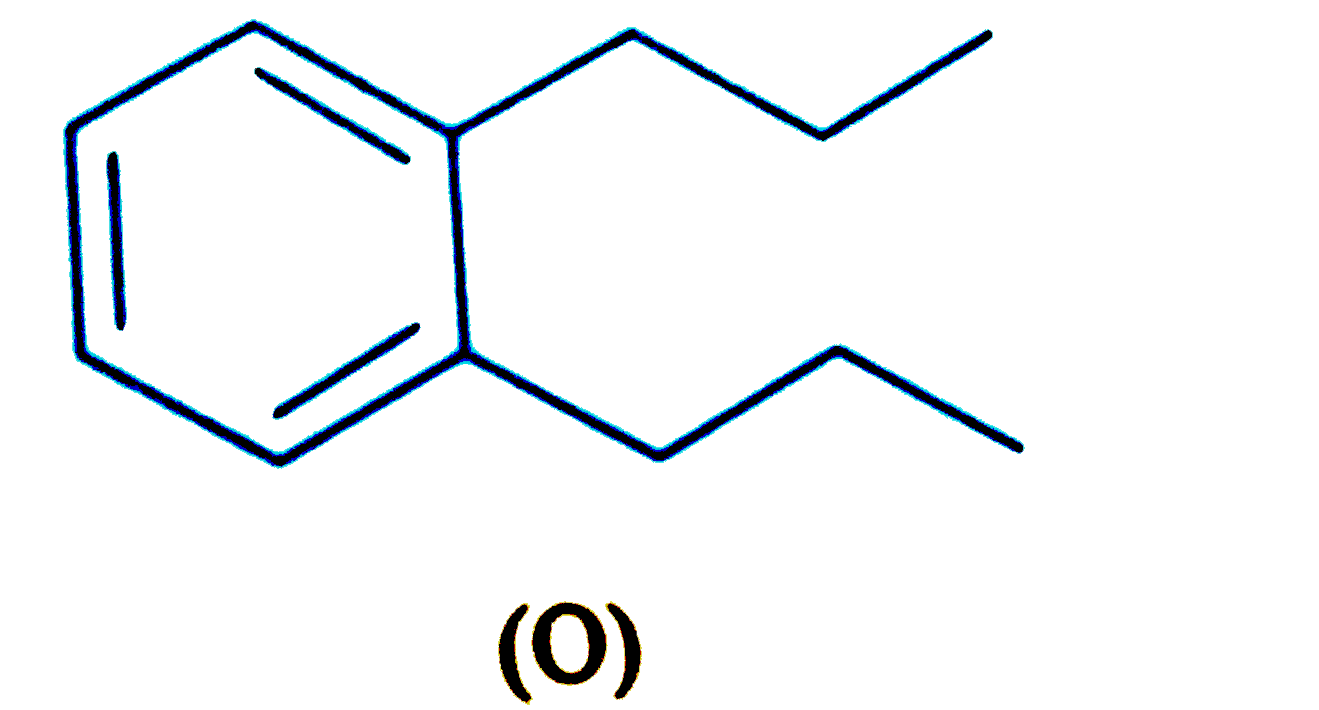[P] on treatment with Br2/FeBr3 in CCl4 produced a single isomer C8H7O2Br while heating [P] with sodalime gave toluene The compound [P] is




To determine the compound (P), we will analyze the information given in the question step by step.
Step 1: Analyze the reaction with Br2FeBr3
The compound (P) reacts with Br2 in the presence of FeBr3 to produce a single isomer C8H7O2Br. The presence of FeBr3 indicates that this is a bromination reaction, which typically occurs on aromatic compounds.
Step 2: Identify the structure of the product
Since the product is C8H7O2Br and is a single isomer, we can infer that the compound must have a specific substitution pattern on the aromatic ring. The presence of a single isomer suggests that the bromine is likely added to a position on the ring that does not allow for multiple substitution patterns (e.g., ortho, meta, or para).
Step 3: Consider the reaction with sodalime
When (P) is heated with sodalime, it produces toluene (C7H8). This indicates that (P) must contain a functional group that can be eliminated to yield toluene. The most common reaction that produces toluene from a compound is the decarboxylation of a benzoic acid derivative.
Step 4: Propose a structure for (P)
Based on the above analysis, we can propose that (P) is likely a bromobenzoic acid derivative. The structure of (P) can be proposed as 4-bromobenzoic acid (C7H5BrO2). When heated with sodalime, the carboxylic acid group can be removed, yielding toluene.
Step 5: Verify the molecular formula
The proposed structure of 4-bromobenzoic acid has the molecular formula C7H5BrO2. When we add a methyl group to account for the toluene produced, we can see that the total formula can be adjusted to C8H7O2Br when considering the bromination.
Conclusion
Thus, the compound (P) is 4-bromobenzoic acid.
---
The compound (P) reacts with Br2 in the presence of FeBr3 to produce a single isomer C8H7O2Br. The presence of FeBr3 indicates that this is a bromination reaction, which typically occurs on aromatic compounds.
Since the product is C8H7O2Br and is a single isomer, we can infer that the compound must have a specific substitution pattern on the aromatic ring. The presence of a single isomer suggests that the bromine is likely added to a position on the ring that does not allow for multiple substitution patterns (e.g., ortho, meta, or para).
When (P) is heated with sodalime, it produces toluene (C7H8). This indicates that (P) must contain a functional group that can be eliminated to yield toluene. The most common reaction that produces toluene from a compound is the decarboxylation of a benzoic acid derivative.
Based on the above analysis, we can propose that (P) is likely a bromobenzoic acid derivative. The structure of (P) can be proposed as 4-bromobenzoic acid (C7H5BrO2). When heated with sodalime, the carboxylic acid group can be removed, yielding toluene.
The proposed structure of 4-bromobenzoic acid has the molecular formula C7H5BrO2. When we add a methyl group to account for the toluene produced, we can see that the total formula can be adjusted to C8H7O2Br when considering the bromination.
Thus, the compound (P) is 4-bromobenzoic acid.
Topper's Solved these Questions
Similar Questions
A compound A (C8H8O2) react with Br2/FeBr3 and gives only one kind of product when A react with sodalime gives toulene find A?
View SolutionAn aromatic compound 'X' (C8H8Br2) on treatment with aqueous KOH gives 'y' (C8H9BrO). On heating 'X' with alcoholic KOH, 'Z' (C8H7Br) is formed the compound 'Z' on reacting Br2/CCl4 forms 'A'. The compound 'A' reacts with fused KOH to give 'B'. Identify all the compound that are involved.
View Solution
Knowledge Check
A solid organic compound (P). Of formula C15H15OH was found to be insoluble in water , dilute HCL or dilute NaOH in cold . After prolonged heating of P with aqueous NaOH, a liquid R was found to be floating on the surface of alkaline mixture . R did not solidfified on cooling to room tempreture, it was steam distilled and separated. Also acidification of alkaline mixture with HCI caused precipitation of a white solid S(C8H8O2). Some additional infromation are given below

S on treatment with Br2/FrBr3 in CI4 produced a single isomer C8H7O2Br while heating 'S' with soda lime gave toluene.A B
B C
C D
D
[P] on treatment with H2CrO4 in acetone produced [Q]. [Q] compound upon heating give rise to Acetophenone. The compound [P] is:
A B
B C
C D
D
An organic compound A on treatment with NH3 gives B, which on heating gives C. C when treated with Br2 in the presence of KOH produces ethyl amine. Compound A is
ACH3COOHBCH3CH2CH2COOHCCH3−C∣CH3HCOOHDCH3CH2COOH
4 A neutral, resolvable organic compound A has molecular formula (C8H16O2). A on treatment with LiAlH4 gives isomeric B and C(C4H10O) of which only B is optically active. B on treatment with acidified dichromate solution gives D(C4H8O), which on refluxing with dilute NaOH followed by acidification of product gave E(C8H14O). E on heating with N2H4 in alkaline medium affords F(C8H16) which on treatment with B.H/H,O,/HO produced a resolvable G (C8H18O). G on treatment with acidified dichromate solution produced H(C8H16O), which on treatment with MCPBA produces A.
Compound (H) is
View SolutionTreatment of compound o with KMnO4/H+ gave P, which on heating with ammonia gave Q. The compound Q on treatment with Br2/NaOH produced R.On strong heating ,Q gave S, which on furthur treatment with ethyl2-bromopropanate in the presence of KOH followed by acidfication , gave acidificatin , gave a compound T.4

The compound T is
View SolutionTreatment of compound o with KMnO4/H+ gave P, which on heating with ammonia gave Q. The compound Q on treatment with Br2/NaOH produced R.On strong heating ,Q gave S, which on furthur treatment with ethyl2-bromopropanate in the presence of KOH followed by acidfication , gave acidificatin , gave a compound T.4

The compound R is
View SolutionTreatment of compound O with KMnO4/H+ have P, which on heating with ammonia gave Q. The compound Q on treatment with Br2/NaOH produced R. On strong heating, Q gave S, which on further treatment with ethyl 2-bromopropanoate in the presence of KOH followed by acidification, gave a compound T.

Q. The compound T is
View SolutionTreatment of compound O with KMnO4/H+ have P, which on heating with ammonia gave Q. The compound Q on treatment with Br2/NaOH produced R. On strong heating, Q gave S, which on further treatment with ethyl 2-bromopropanoate in the presence of KOH followed by acidification, gave a compound T.

Q. The compound R is
View Solution
